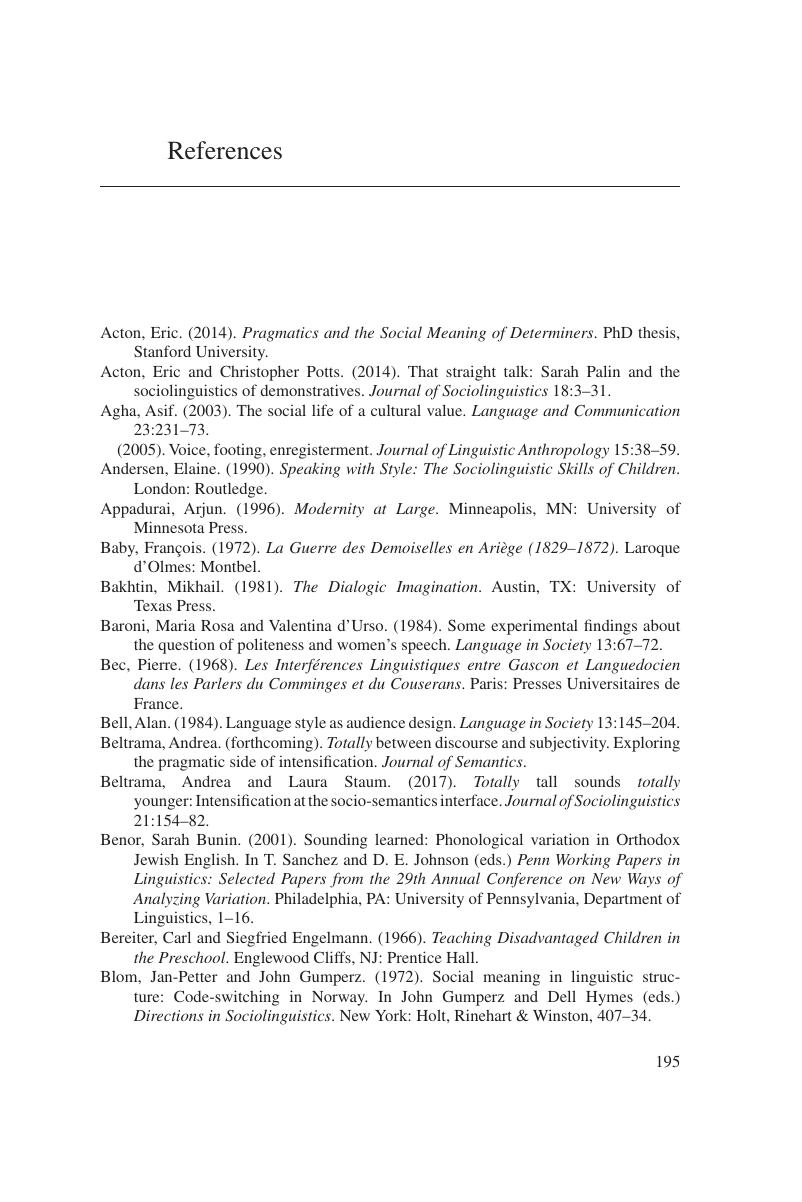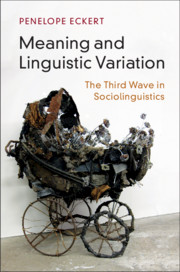References
Published online by Cambridge University Press: 26 June 2018
Summary

- Type
- Chapter
- Information
- Meaning and Linguistic VariationThe Third Wave in Sociolinguistics, pp. 195 - 204Publisher: Cambridge University PressPrint publication year: 2018



